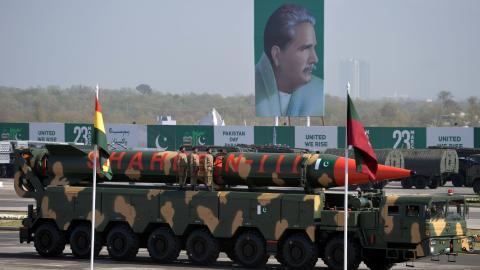In the summer of 2021, the world learned that China was dramatically expanding its nuclear arsenal. Satellite imagery showed Beijing building as many as 300 new ballistic missile silos. The Pentagon now projects that China’s stockpile of nuclear weapons, which had for years rested in the low hundreds, could spike to 1,500 warheads by 2035, confirming suspicions that Beijing has decided to join Russia and the United States in the front rank of nuclear powers.
Security experts are only beginning to sort through the implications of China’s nuclear breakout. They would do well to consider Ashley Tellis’s new book, Striking Asymmetries, which assesses the implications of Beijing’s actions from the vantage point of the rivalries between South Asia’s three nuclear powers: China, India, and Pakistan. In a work that should be required reading for senior political and military leaders, Tellis presents a compelling case why this tripolar nuclear system, which has for decades remained remarkably stable, may be on the verge of becoming far more dangerous.



















